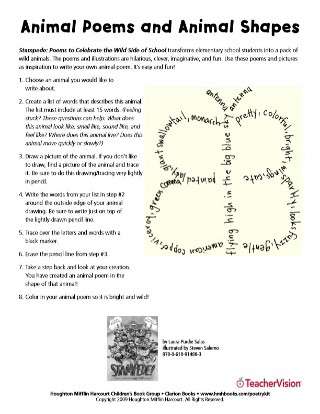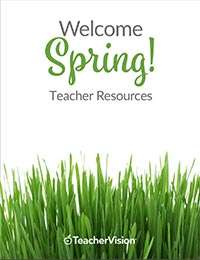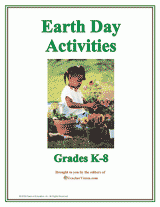Cows Can't Fly by David Milgrim
Summary of the Story
A little boy's drawing of flying cows flies away and lands in a field with some real cows. These cows study the picture of the cows flying and then take to the air. The little boy runs to tell the adults,
- Read the title of the book on the cover, pointing to each word as you say it. Have children repeat the title as you point to each word.
- Point to the cows on the cover. Ask the child if they can tell what is unusual about these cows. (They are flying in the sky.) Can real cows do this?
Reading the Story for the First Time
- Read the story, moving your finger under the words as you read.
- As you read, tell children to listen to the words that rhyme: care/air, said/instead, breeze/trees.
Recalling the Story
- After you have finished reading, ask children the recall questions below. Continue to ask these questions when you reread the book, until he or she knows the answers.
Reading the Story Again and Again
- Give open-ended prompts on each page. For example, ask: What's happening on this page? What happens to the drawing? What happens then? Do less reading of the words to the story each time you read, leaving more of the "reading" or retelling to the child.
- Give prompts about objects or activities in the pictures. For example, ask: What is the boy drawing? (He's drawing pictures of flying cows.) Use your finger to point to what you are asking about. Evaluate the child's response. Expand it and ask the child to repeat the answer. If he or she needs help in answering a question, ask that question again the next time you read the book.
- You may wish to discuss the prompts shown below.
Extra Activities
- Have children draw pictures of animals they would like to see fly.
- Children can read Cows Can't Fly to each other.
Recall Questions
Ask the following questions to check children's understanding of the story.
- What did the little boy draw pictures of? (He drew pictures of cows that could fly.)
- What happened when the drawing fell into a pasture with some cows? (The cows studied the drawing and practiced flying.)
- Who saw the flying cows first? (The little boy and his dog saw the cows.)
- What does the boy's dad say about flying cows? (Cows can't fly.)
- What does the boy's mom say about flying cows? (She wanted to look, but she was busy.)
- What does the boy's grandma say about flying cows? (She doesn't think cows can fly if she can't fly.)
- What does the teacher say about flying cows? (They can't fly because they're too fat.)
- What does the boy think about at the end of the story? (He wonders whether any other animals can fly.)
Prompts
Use the following questions after the second or third reading of Cows Can't Fly. There are questions for every one or two pages of the story.
- What is happening on the first page of the story? (The boy is drawing pictures of cows flying in the sky.)
- What does the boy's father think about the drawing? (He thinks it is absurd to show cows flying.)
- What happens to the drawing? (A breeze carries it up into the sky.)
- Where does the drawing go? (It goes up over the boy's house.)
- Where does the drawing land? (It lands in a pasture with some cows.)
- What does it mean when someone says, "Hmmm...?" (It means the person is thinking about something.)
- What do you think the cows are thinking? (They are wondering if they could fly like the cows in the picture.)
- What is happening in this picture? (The boy and his dog are watching the cows fly by.)
- Where do the cows fly? (They fly over the town.)
- Do the boy's mom and dad believe him? (No, they don't believe him.)
- Has this ever happened to you? When?
- What kind of job does the boy's grandma have? (She delivers the mail.)
- Why does Ms. Crumb say that cows can't fly? (She says that cows are too fat to fly.)
- How do the people downtown feel about the flying cows? (They aren't interested; they're too busy looking down.)
- Who are the only ones to see the flying cows in the story? (Only the boy and his dog see the flying cows.)
- What is happening in this picture? (The boy is drawing a picture of his dog.)
- What do you think the dog is doing in his picture? (He is thinking about flying.)
- What is the boy thinking as he visits the animals in the zoo? (He thinks that they might be able to fly, too.)
Vocabulary
The words listed below come from the story and its pictures. As you page through the book, ask children to name the objects listed or talk about the actions portrayed. Words are listed for every two pages of the story. Ask about other objects and actions shown in the pictures as you see fit.
- dog, crayons, smiling
- breeze, blowing leaves, blowing hair
- above the houses, swimming pool, lounge chair, blowing trees, pointing
- cows, horns, mountains, clouds
- thinking, flapping
- surprised, flying, barking
- looking up, sidewalk, houses
- sleeping, newspaper, drill, safety glasses, flapping arms
- letter carrier, letters, mail bag, name tag
- teacher, chalkboard, chalk, pointer
- store, fish, woman, man, manhole, traffic cone, street sweeper, broom, baby, cat
- lying down
- standing on one foot, garbage can, drawing pad, sleeping bag, paint can, paint brush
- giraffe, rhinoceros, walrus, boar, tusks, backpack












